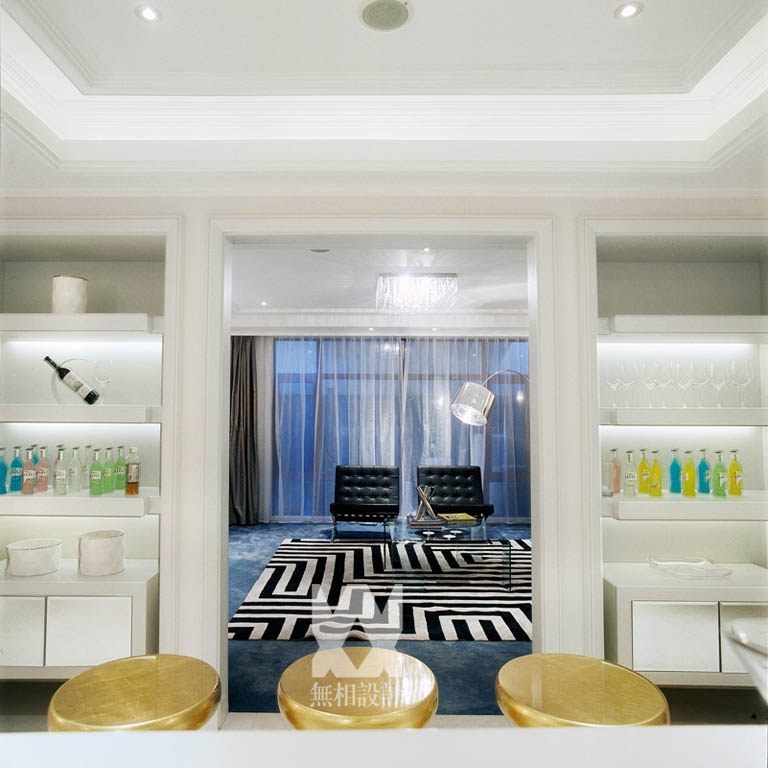Sunlighthouse Juri Troy Architects
2013-12-22 01:00
结构分析-Merz Kley和Partner Build物理学
Structural Analysis Merz Kley und Partner Building physics & construction ecology IBO - Österreichisches Institut für Baubiologie und Bauököloge (Verein) und IBO GmbH Technical support in building physics & energy concept Donau-Universität Krems Main contractor timber construction Kaspar Greber Manufacturers Loading...
架构师提供的文本描述。位于维也纳附近普雷斯鲍姆的Velux太阳灯塔是奥地利第一座同面积中立的单身家庭住宅。该项目于2010年10月底完成。这个项目大约两年前由Velux公司作为泛欧实验的一部分启动,这个项目被称为“2020年示范家居”项目。其目标是在五个欧洲国家开发、建造和分析六座不同的房屋,每个国家都遵循自己的渐进和可持续的建筑和生活方式。
Text description provided by the architects. The Velux Sunlighthouse in Pressbaum near Vienna is the first co²-neutral single-family-house in Austria. It was completed end of October 2010. The project was launched about two years ago by the Velux company as a part of their Pan European experiment, the so called “model home 2020” project. The goal is to develop, build and analyze six different houses in five European countries, each following its own approach to progressive and sustainable building and living.
奥地利模式住宅面临的挑战是创造一座能充分挖掘情节潜力的房子(比如美丽的风景、阳光的照射、现有房屋之间最大限度的隐私,…)。一方面,发展能源和生态概念,以消除生态足迹的房子在未来30年内,另一方面。这个项目与许多雄心勃勃的项目的区别在于,需要并希望将能源效率的最小化数值与雄心勃勃的建筑结合起来。
The challenge of the Austrian model home was to create a house that taps the full potential of the plot (like the wonderful views, exposure to the sunlight, maximum of privacy between the existing houses, …) on one hand and to develop an energy and ecology concept to erase the ecological footprint of the house within the next thirty years on the other hand. What distinguishes this project from many ambitious preceding projects is the need and wish to combine minimized numerical values for energy efficiency with ambitious architecture.
幸运的是,客户们为这座奥地利模型的住宅选择了一个理想的地块。这是一片细长的土地,向美丽的(但有阴影的)树木下降,在东南部有高树。地势两侧是东北的一处密密的树篱和西南部的一堵高墙。两边相邻的两所房子都很近,在这两者之间只留下了一点隐私空间。只有深入到地下一步,才能捕捉到位于东方山谷中的湖泊的美妙景色。简言之:如果要实现雄心勃勃的目标,一个最大限度地利用情节提供的潜力的设计理念,必须不仅仅是口头上的表达。这使得该项目的成果更加宝贵,因为在像奥地利这样的多山国家,负担得起的地块很少提供理想的条件。
Fortunately the clients had chosen an anything but ideal plot for the Austrian model home. It is a slender and long piece of land that declines towards a beautiful (but shading) wood with high trees in the Southeast. The plot is flanked by a dense hedge in the Northeast and a high wall in the Southwest. The two close situated neighboring houses on both sides leave just a little scope for privacy in between. The wonderful view to the lake which is situated in the valley in the East can only be caught by getting a step deeper into the ground. In short: A design concept that uses a maximum of the potential that the plot offers had to be more than a lip service, if the ambitious targets were supposed to be accomplished. This makes the results of the project even more precious as affordable plots in a mountainous country like Austria rarely offer ideal conditions.
该建筑的能源概念是与克里姆斯多瑙河大学合作开发的。建筑设备包括一个高性能热泵、48平方米单晶光伏屋顶板、9平方米热水热太阳能电池板和一个具有热回收功能的受控空气系统。优化了房屋壳体表面的隔热性能,使窗户满足被动式住宅的要求。(在奥地利)到目前为止,忽视的需求是获得最大的日光,以降低人工光的能量消耗。每间单人房间所达到的日光系数平均比通常标准高出五倍。屋顶和立面窗户的战略定位是提供令人惊叹的景观,最大限度地利用被动太阳能,使夏季最佳自然通风,并在冬季将热损失降至最低。事实上,阳光灯塔的总窗户面积相当于其建筑面积的42%。像外面的木板,内部装修是由云杉木材。为了保持木质表面明亮,避免变暗,采用白色天然色素处理。
The energy concept of the building was developed in collaboration with the Danube University of Krems. The building equipment includes a high performing heat pump, 48 m² mono crystalline photovoltaic roof panels, 9 m² thermal solar panels for hot water and a controlled air system with heat recovery. The heat insulation of the shell surface of the house is optimized and the windows fulfill passive house requirements. A (in Austria) so far disregarded demand was to obtain a maximum of daylight to lower the energy consume for artificial light. The reached daylight factor in every single room is on average five times higher than the usual standard. The roof and facade windows were strategically positioned to provide stunning views, to maximize passive solar energy, to enable an optimal, natural ventilation during summer time and to minimize the thermal losses during winter time. In fact the Sunlighthouse’s total window area is equal to 42% of its floor area. Like the outside planking, the interior fitting is made of spruce wood. To keep the wooden surface bright and avoid darkening, it was treated with white pigmented natural oil.
所有材料在获准使用之前都必须根据其生态质量进行评估。奥地利建筑生物和生态研究所(IBO)也对每种组装材料的估价进行了基准。使用当地生长和加工的木材作为主要材料来优化CO_2值是不言自明的,但由于建筑物位于一座小山上,因此也有必要为所有接地建筑元件使用混凝土。代替普通的波特兰水泥(表现出相当差的CO_2平衡)的爆炸-糠醛渣,一种从钢铁生产的副产品,产出极低的钴产量,被用来混合混凝土。应用的绝缘材料是羊毛和回收纤维素。
All materials had to be evaluated by their ecological qualities before they were authorized to use. The Austrian Institute for Construction Biology and Ecology (IBO) also benchmarked the co² valuation of every assembled material. Using locally grown and processed wood as main material to optimize the co² values are self-explanatory, but as the building is positioned in a hill it was also necessary to use concrete for all the grounding construction elements. Instead of ordinary Portland cement (which shows a quite poor co² balance) blast-furmace-slag, a spin-off product from steel production with extremely low co² output, was used to mix the concrete. The applied insulation material is sheep wool and recycled cellulose.
最终目标实现了。太阳灯塔将产生比房屋的建筑和使用更多的能源消耗,这使它成为一个小的“发电站”和一个灯塔项目,为进一步有意识和可持续的规划和建设。
In the end the goal was accomplished. The Sunlighthouse will produce more energy than the building and using of the house consumes, which makes it a small “power station” and a beacon project for further conscious and sustainable planning and building.
 举报
举报
别默默的看了,快登录帮我评论一下吧!:)
注册
登录
更多评论
相关文章
-

描边风设计中,最容易犯的8种问题分析
2018年走过了四分之一,LOGO设计趋势也清晰了LOGO设计
-

描边风设计中,最容易犯的8种问题分析
2018年走过了四分之一,LOGO设计趋势也清晰了LOGO设计
-

描边风设计中,最容易犯的8种问题分析
2018年走过了四分之一,LOGO设计趋势也清晰了LOGO设计






































































